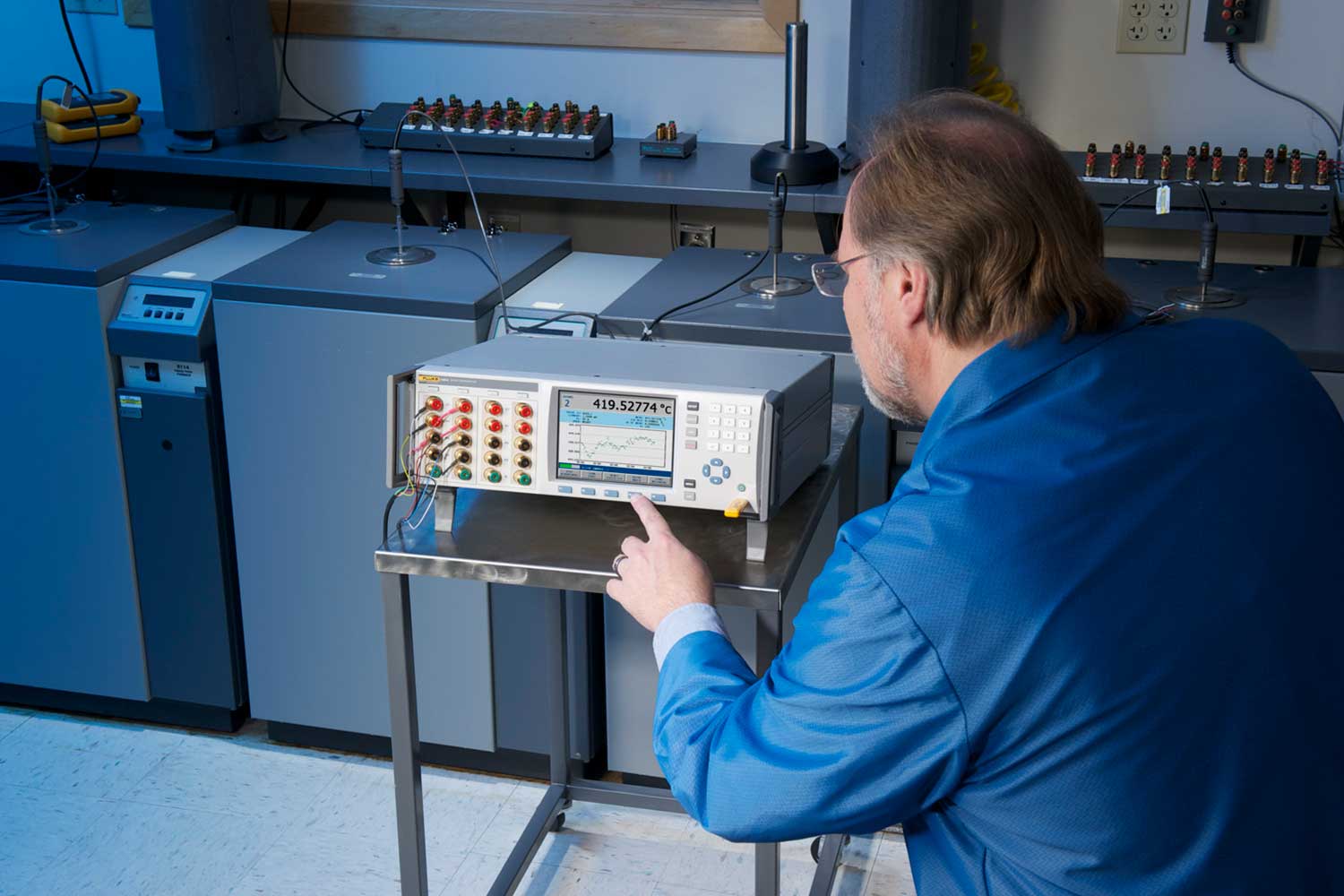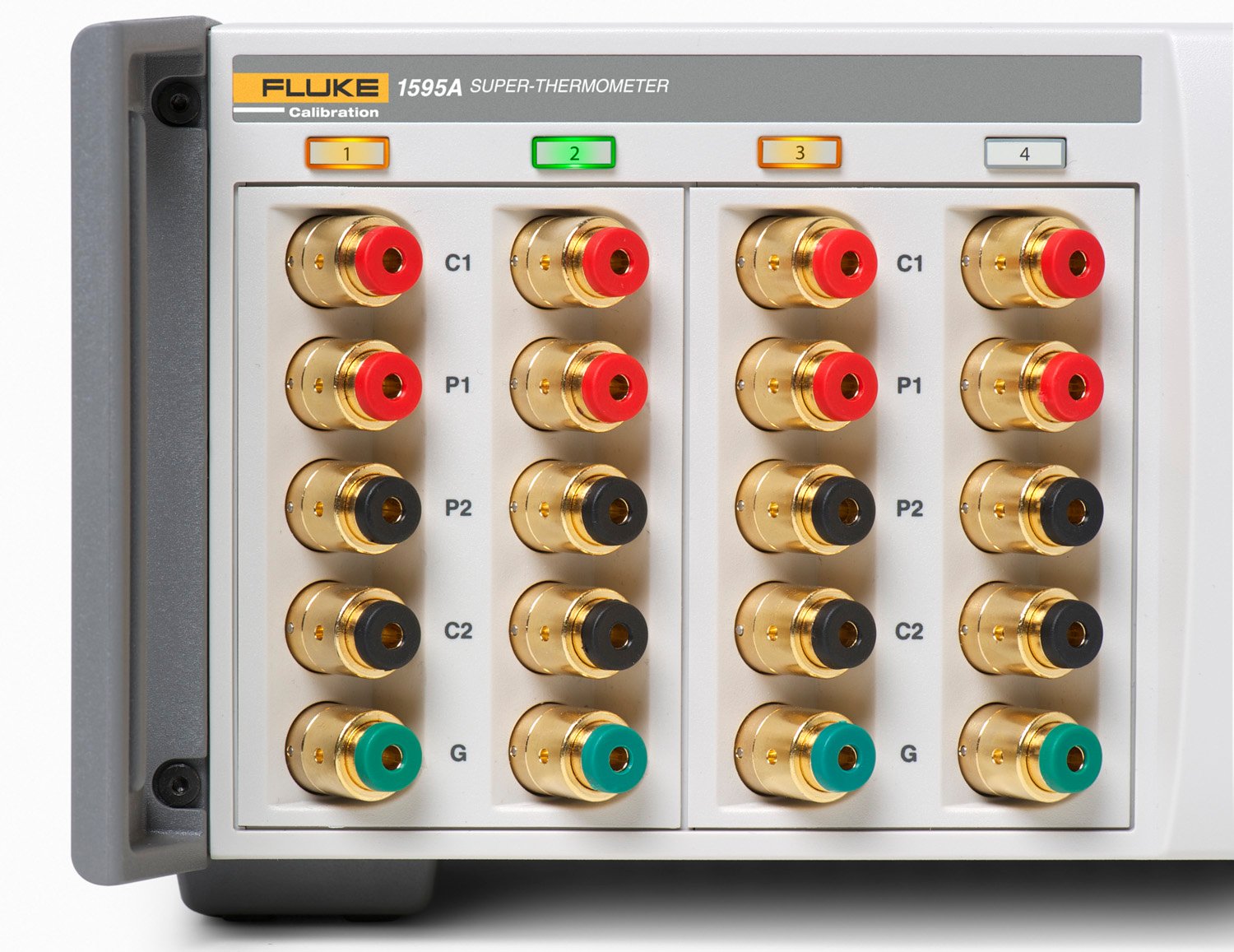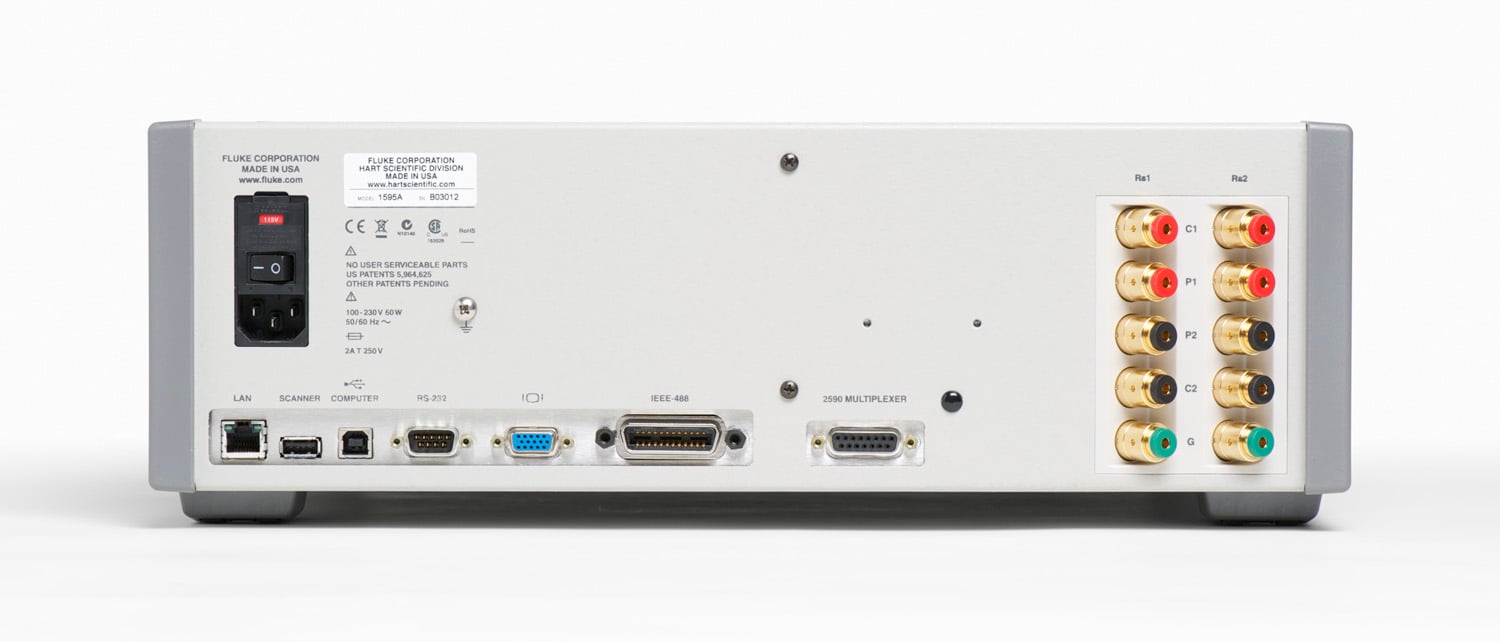With ratio accuracy as good as 0.06 ppm (0.000015 °C) the Fluke Calibration Super-Thermometer is sure to become a highly valued instrument in your calibration laboratory. It is an ideal choice for applications that previously required the use of complex and expensive bridges, such as calibrating SPRTs, PRTs, and thermistors.

10 reasons to choose the Super Thermometer for your high accuracy temperature measurements.
1. Accurate enough for the primary lab, economical enough for the secondary lab
The Super-Thermometer features high performance accuracy at an economical cost. The 1595A offers ratio accuracy of 0.06 ppm (0.000015 °C) at ratios near one (0.95 to 1.05). You can get similar accuracy with traditional ac bridges and other digital bridges, but they cost 30 % to 80 % more.
2. Reliable accuracy
The one-year absolute resistance accuracy of the Super-Thermometer using a 100 Ω PRT is 4 ppm (0.001 °C at 0 °C). Its temperature-controlled internal reference resisters are so stable that within a 24-hour period their resistance won’t change more than 0.25 ppm.
3. Easy to use
The Super-Thermometer features an intuitive user interface that makes it much easier to use than a bridge. Unlike bridges that only display ratio, the 1594A and 1595A let you choose how to display results—in ratio (Rx/Rs), Ω, °C, °F, K. All five terminals of each Super-Thermometer channel are aligned vertically, making it easy to connect a probe and identify its channel.

All five terminals of each Super-Thermometer channel are aligned vertically, making it easy to connect a probe and identify its channel.
4. Fast, convenient setup and operation
All five terminals of each Super-Thermometer channel are aligned vertically, making it easy to connect a probe and identify which channel it’s connected to. Configurable standby current for each input channel minimizes self-heating transients when scanning between channels. The zero-power measurement function calculates the effects of self-heating automatically, saving time and increasing accuracy over other instruments that require you to do this manually.
5. Verify accuracy in-house—quickly and easily
The Ratio Self-Calibration feature enables you to easily test the accuracy or calibrate the resistance ratio linearity of the Super-Thermometer’s measurement circuit, in about 30 minutes.
6. Extremely fast measurement speed
Super-Thermometers offer speeds as fast as one second per measurement (full accuracy with a two-second sample period). Faster measurement speeds allow you to evaluate response times of different thermometer probe types. Traditional bridges typically require a minimum of 20 seconds to complete a single measurement. There’s a lot going on in between measurements that you just can’t see when using a traditional ratio bridge. The Super-Thermometer not only completes the measurement quickly, but it also graphs the result, making it easy to visually evaluate your process.
7. Increased throughput
The Super-Thermometer has four input channels on its front panel (unlike the two or three channels you’ll find on bridges or other products), enabling you to make more measurements at once. Two reference resistor inputs on the rear panel allow you to improve accuracy without tying up any of the sensor input channels. And if you need even more channels, up to two scanners can be connected to the 1594A or 1595A, for a total of 20 additional channels.
 Two reference resistor inputs on the back panel keep front-panel channels free for reference thermometers and units under test.
Two reference resistor inputs on the back panel keep front-panel channels free for reference thermometers and units under test.
8. Inexpensive maintenance
Calibrating a bridge’s ratio accuracy in-house requires a ratio bridge calibrator, which can cost up to $7,500 USD. The process itself can take several hours to complete—that is after many hours of training have been invested to learn how to perform the calibration. With Ratio Self-Calibration, the ratio accuracy of the Super-Thermometer can be maintained in-house without extensive training and additional external equipment.
9. Wide input range
With 0 to 500 kΩ input resistance range, and ratio range of 0 to 10, the Super-Thermometer is the perfect choice for a wide range of sensor types.
10. Modern display and interfaces
The Super-Thermometer’s large graphical display allows simultaneous graphing of multiple channels, so you can see all your measurements at once. A USB port, conveniently located on the front panel, allows time- and date-stamped measurements to be logged directly to a USB flash drive. Read or write probe definitions, reference resistor definitions, or Super-Thermometer configurations to or from a USB memory device. An Ethernet connection allows you to control and view the Super-Thermometer’s display and functions via remote control. A VGA output connector is also standard.